
Barnett Newman was an American artist. He has been critically regarded as one of the major figures of abstract expressionism, and one of the foremost color field painters. His paintings explore the sense of place that viewers experience with art and incorporate the simplest forms to emphasize this feeling.
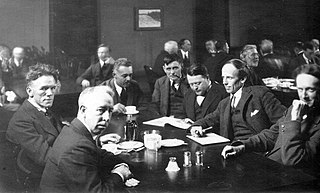
The Group of Seven, once known as the Algonquin School, was a group of Canadian landscape painters from 1920 to 1933, with "a like vision". It originally consisted of Franklin Carmichael (1890–1945), Lawren Harris (1885–1970), A. Y. Jackson (1882–1974), Frank Johnston (1888–1949), Arthur Lismer (1885–1969), J. E. H. MacDonald (1873–1932), and Frederick Varley (1881–1969). A. J. Casson (1898–1992) was invited to join in 1926, Edwin Holgate (1892–1977) became a member in 1930, and Lionel LeMoine FitzGerald (1890–1956) joined in 1932.
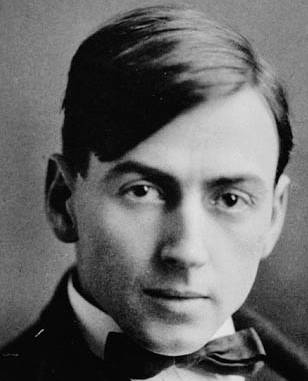
Thomas John Thomson was a Canadian artist active in the early 20th century. During his short career, he produced roughly 400 oil sketches on small wood panels and approximately 50 larger works on canvas. His works consist almost entirely of landscapes, depicting trees, skies, lakes, and rivers. He used broad brush strokes and a liberal application of paint to capture the beauty and colour of the Ontario landscape. Thomson's accidental death by drowning at 39 shortly before the founding of the Group of Seven is seen as a tragedy for Canadian art.
Guido Molinari L.L. D. was a Canadian artist, known nationally and internationally for his serial abstract paintings and their dynamic interplay of colours and focus on modular shapes. His Stripe series is especially celebrated. Molinari himself described their effect - and the effect of all his paintings - as creating a new kind of fictional space "because it happens in the mind and yet also involves the totality of perception".

The National Gallery of Canada, located in the capital city of Ottawa, Ontario, is Canada's national art museum. The museum's building takes up 46,621 square metres (501,820 sq ft), with 12,400 square metres (133,000 sq ft) of space used for exhibiting art. It is one of the largest art museums in North America by exhibition space.

Franklin Carmichael was a Canadian artist and member of the Group of Seven. Though he was primarily famous for his use of watercolours, he also used oil paints, charcoal and other media to capture the Ontario landscapes. Besides his work as a painter, he worked as a designer and illustrator, creating promotional brochures, advertisements in newspapers and magazines, and designing books. Near the end of his life, Carmichael taught in the Graphic Design and Commercial Art Department at the Ontario College of Art.

Bertram Richard Brooker was a Canadian abstract painter. A self-taught polymath, in addition to being a visual artist, Brooker was a Governor General's Award-winning novelist, as well as a poet, screenwriter, playwright, essayist, copywriter, graphic designer, and advertising executive. A key part of the art community in Toronto, he is considered one of its "most gifted first responders".

James Edward Hervey MacDonald (1873–1932) was an English-Canadian artist, best known as a member of the Group of Seven who asserted a distinct national identity combined with a common heritage stemming from early modernism in Europe in the early twentieth century. He was the father of the illustrator, graphic artist and designer Thoreau MacDonald.
Roy Kenzie Kiyooka was a Canadian painter, poet, photographer, arts teacher.
Bruce Barber is an artist, writer, curator, and educator based in Halifax, Nova Scotia, where he teaches at NSCAD University. His artwork has been shown at the Paris Biennale, the Sydney Biennial, the New Museum of Contemporary Art, the Walter Phillips Gallery, London Regional Gallery, and Artspace NZ in Auckland. Barber is the editor of Essays on Performance and Cultural Politicization and of Conceptual Art: the NSCAD Connection 1967–1973. He is co-editor, with Serge Guilbaut and John O'Brian of Voices of Fire: Art Rage, Power, and the State. His critical essays have appeared in numerous anthologies, journals and magazines. His art practice is documented in the publication Reading Rooms. He is best known for his early performance work, his Reading Rooms, Squat Projects and his writing and theory on Littoral Art.
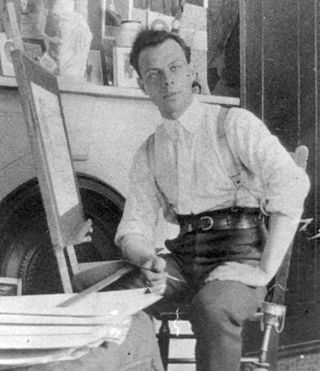
David Milne was a Canadian painter, printmaker, and writer. He was profoundly different from most of his Canadian art contemporaries, especially Tom Thomson and the Group of Seven. He is sometimes referred to as the Master of Absence and known for his ability to reduce a painting to its bare essentials.
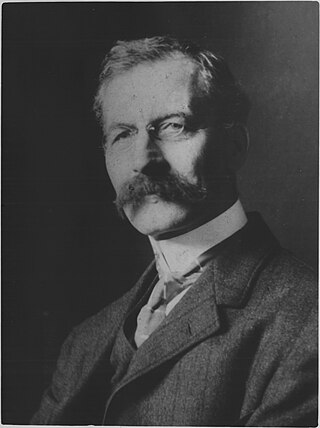
William Brymner, was a Canadian figure and landscape painter and educator. In addition to playing a key role in the development of Impressionism in Canada, Brymner taught numerous artists who became leading figures in Canadian modern art.
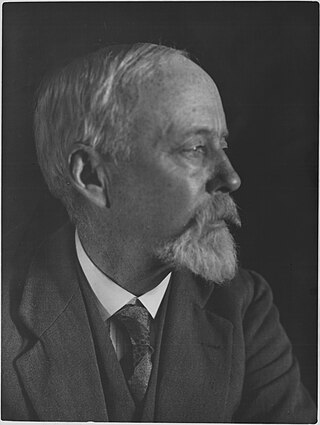
Maurice Cullen is considered to be the father of Canadian Impressionism because he was the first artist to skillfully adapted French Impressionism to Canadian conditions. He is best known for his paintings of snow and his depictions of ice harvest scenes, featuring horse-drawn sleighs traveling across the frozen waters of Quebec during winter. The Laurentians were his greatest love and he painted there often. He excelled in painting crisp northern light.
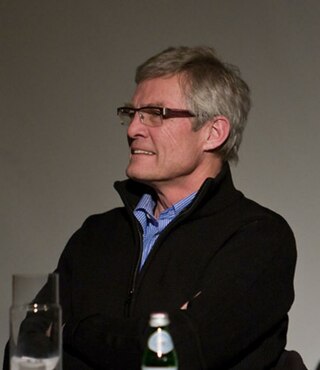
John O'Brian is an art historian, writer, and curator. He is best known for his books on modern art, including Clement Greenberg: The Collected Essays and Criticism, one of TheNew York Times "Notable Books of the Year" in 1986, and for his exhibitions on nuclear photography such as Camera Atomica, organized for the Art Gallery of Ontario in 2015. Camera Atomica was the first comprehensive exhibition on postwar nuclear photography. From 1987 to 2017 he taught at the University of British Columbia, Vancouver, where he held the Brenda & David McLean Chair in Canadian Studies (2008-11) and was an associate of the Peter Wall Institute for Advanced Studies. O'Brian has been a critic of neoconservative policies since the start of the Culture Wars in the 1980s. He is a recipient of the Thakore Award in Human Rights and Peace Studies from Simon Fraser University.

Vanitas: Flesh Dress for an Albino Anorectic (1987) is an artwork created by Canadian artist Jana Sterbak, first displayed at the Galerie René Blouin in Montreal. Its most famous showing was at the National Gallery of Canada in Ottawa, where it attracted national controversy. The work was composed of 50 pounds of raw flank steaks sewn together, and hung on a hanger. According to the artist, the work is a contrast between vanity and bodily decomposition. The artwork is in the collections of Walker Art Center in Minneapolis and of Centre Pompidou in Paris.
The RBC Canadian Painting Competition was an open competition for emerging Canadian artists that was established in 1999. The RBC Canadian Painting Competition is supported by the Canadian Art Foundation, the publisher of Canadian Art (magazine). Initially naming three regional winners, since 2004 there were one national winner and two honourable mentions. The first two competitions had only winner and runner-up. The competition had 15 finalists, five from three regions in Canada, Eastern Canada, Central Canada (Ontario), Western Canada. Three regional juries convened to determine one national winner and two honourable mentions from the 15 finalists. The national winner received a purchase prize of $25,000, the two honourable mentions each received $15,000 and the remaining 12 finalists receive $2,500 each. The winning work and the honourable mentions became part of the RBC Corporate Art Collection which holds more than 4,500 works. In 2016, 586 works were submitted. In 2008 an exhibition at the National Gallery of Canada in Ottawa and the Musée d'art contemporain de Montréal provided an overview of the first ten years of the competition. The RBC concluded the RBC Canadian Painting Competition in 2019.
Barbara Barber FRSA (1873–1966) was a Canadian artist. Barber, along with Sybil Henley Jacobson and Harriette Keating was one of two of the founding members of the Women's Art Association of Saskatchewan. Barber moved to Regina with her husband in 1912. She trained in Toronto and was a Fellow of the Royal Society of Arts.
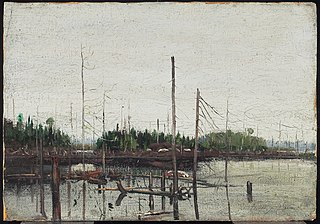
Drowned Land is a 1912 oil sketch by the 20th-century Canadian painter Tom Thomson.
Jeanette Reinhardt is a Canadian video artist.
Brydon Smith was an art curator and museum administrator who had an impact on International and Canadian art history. As Assistant Director and Director of Research and Collections at the National Gallery of Canada (NGC), he helped plan and realize the new building in 1988, for which he received a Public Service Award of Merit. Among his acquisitions of works of art for galleries was Claes Oldenburg's Floor Burger and Barnett Newman's Voice of Fire. As a result of his purchases, exhibitions, and publications, particularly of postwar American art, the National Gallery of Canada acquired credibility in a broader North American cultural context. In 2014, he was awarded the Governor General's Award in Visual and Media Arts.














